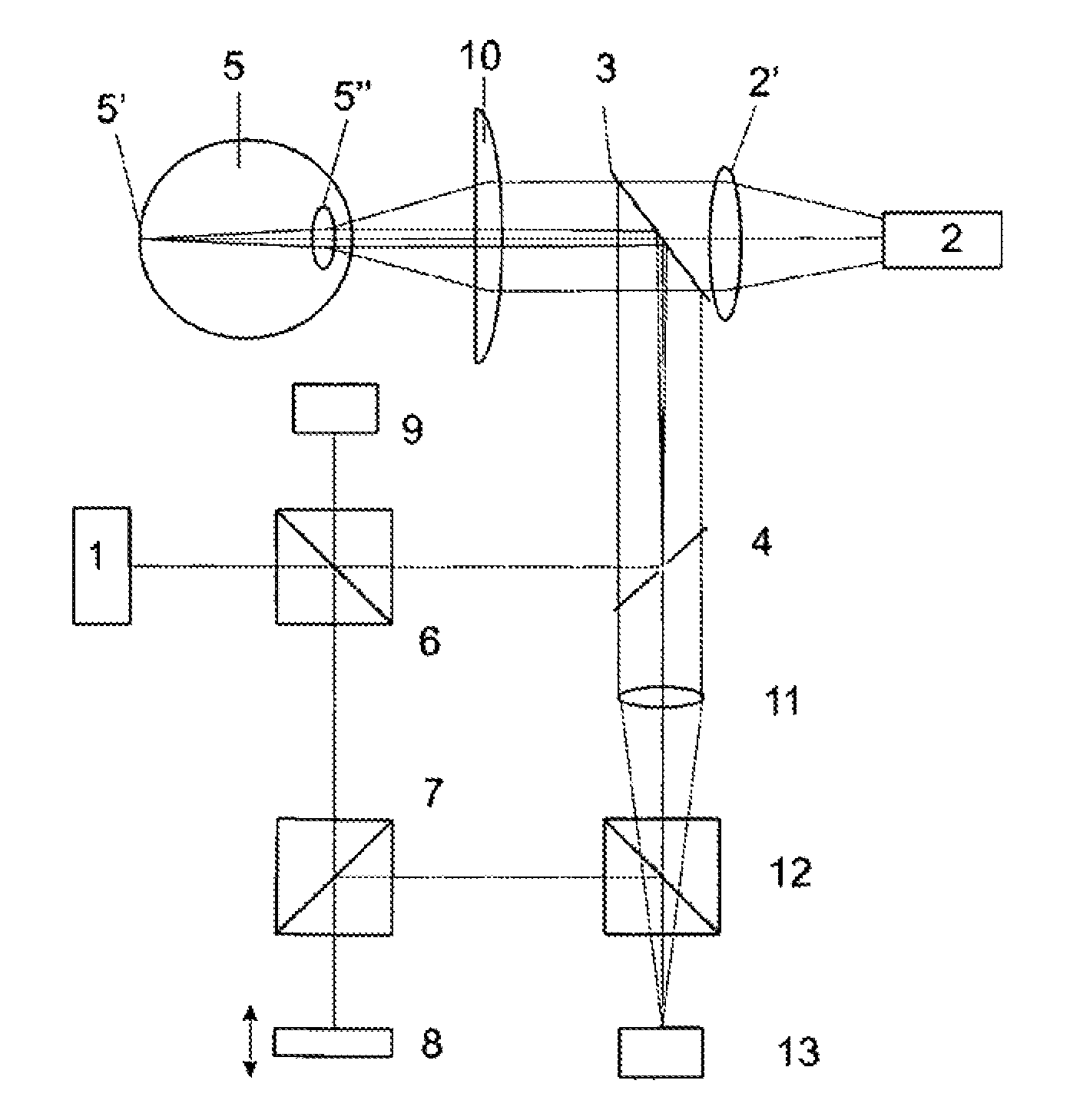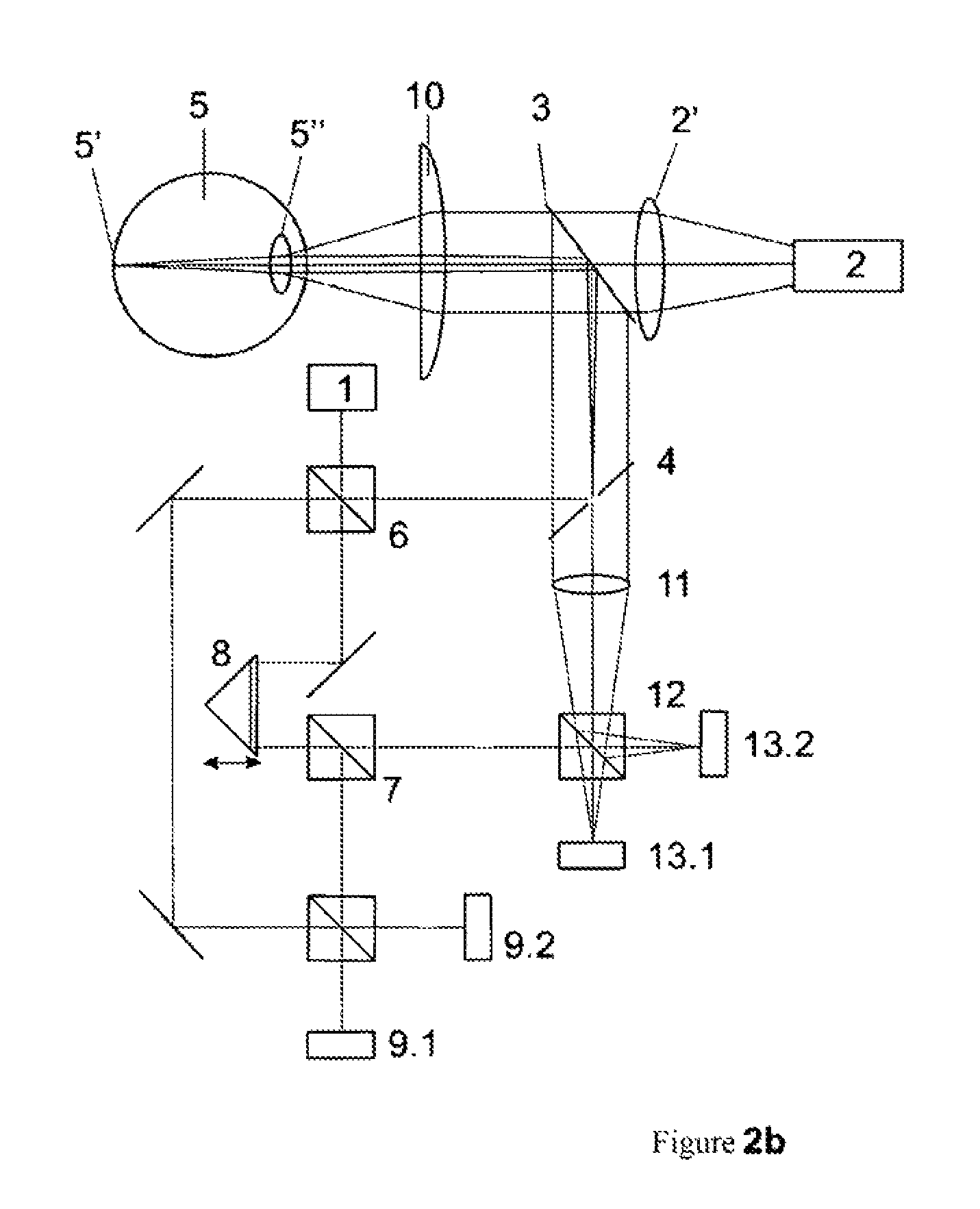Device for interferometrically measuring the eye length and the anterior eye segment
a technology of interferometry and eye length, which is applied in the field of devices for interferometry measuring eye length and anterior eye segment, can solve the problems of time-consuming adjustment of eye length and eye length, and the inability of patients to co-operate, and achieve the effect of high reliability and sensitivity
- Summary
- Abstract
- Description
- Claims
- Application Information
AI Technical Summary
Benefits of technology
Problems solved by technology
Method used
Image
Examples
Embodiment Construction
[0026]A device according to an example embodiment of the invention for interferometrically measuring the eye length and the anterior portion of the eye includes an illumination source, at least one interferometric measuring system having an external reference, various optical imaging systems, and a control and evaluation unit. The illumination source has high spatial coherence and low temporal coherence. The illumination device emits light from the NIR range having a wavelength of 700-1000 nm, for example. Furthermore, an optical imaging system is situated in front of the eye in such a way that the illumination light strikes the eye as an approximately collimated beam.
[0027]In this regard, it is advantageous that the device according to the invention has at least one image sensor, which although not absolutely necessary for the function, is practical as an adjustment aid. For coupling the illumination path and the observation beam path, the device has an appropriate beam splitter.
[0...
PUM
 Login to View More
Login to View More Abstract
Description
Claims
Application Information
 Login to View More
Login to View More - R&D
- Intellectual Property
- Life Sciences
- Materials
- Tech Scout
- Unparalleled Data Quality
- Higher Quality Content
- 60% Fewer Hallucinations
Browse by: Latest US Patents, China's latest patents, Technical Efficacy Thesaurus, Application Domain, Technology Topic, Popular Technical Reports.
© 2025 PatSnap. All rights reserved.Legal|Privacy policy|Modern Slavery Act Transparency Statement|Sitemap|About US| Contact US: help@patsnap.com



